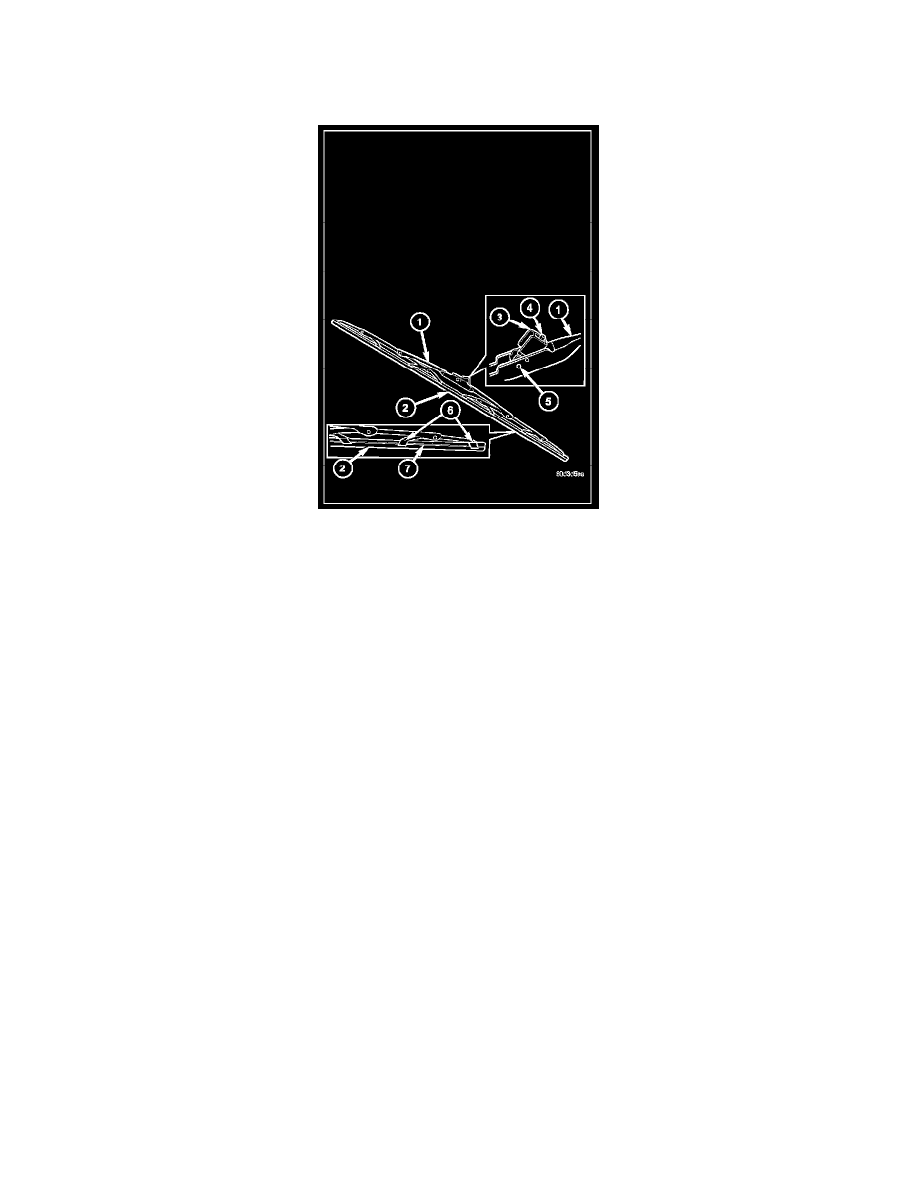Raider V6-3.7L SOHC (2006)

Wiper Blade: Description and Operation
WIPER BLADE
DESCRIPTION
Each wiper blade is secured by an integral latching pivot block (3) to the hook formation on the tip of each wiper arm, and rests on the glass near the
base of the windshield when the wipers are not in operation. The wiper blade consists of the following components:
-
Superstructure (1) - The superstructure includes several stamped steel bridges and links with claw formations that grip the wiper blade element.
Also included in this unit is the latching, molded plastic pivot block that secures the superstructure to the wiper arm. All of the metal components
of the wiper blade have a satin black finish applied.
-
Element (2) - The wiper element or squeegee is the resilient rubber member of the wiper blade that contacts the glass.
-
Flexor (7) - The flexor is a rigid metal component running along the length of each side of the wiper element where it is gripped by the claws (6)
of the superstructure.
The right and left wiper blades are 50.00 centimeters (19.69 inches) long, and are interchangeable. They have non-replaceable rubber elements
(squeegees). The wiper blades cannot be adjusted or repaired. If faulty, worn, or damaged the entire wiper blade unit must be replaced.
OPERATION
The wiper blades are moved back and forth across the glass by the wiper arms when the wipers are being operated. The wiper blade superstructure is the
flexible frame that grips the wiper blade element and evenly distributes the force of the spring-loaded wiper arm along the length of the element. The
combination of the wiper arm force and the flexibility of the superstructure makes the element conform to and maintain proper contact with the glass,
even as the blade is moved over the varied curvature that may be encountered across the glass surface.
The wiper element flexor provides the claws of the blade superstructure with a rigid, yet flexible component on the element which can be gripped. The
rubber element is designed to be stiff enough to maintain an even cleaning edge as it is drawn across the glass, yet resilient enough to conform to the
glass surface and flip from one cleaning edge to the other each time the wiper blade changes directions.
